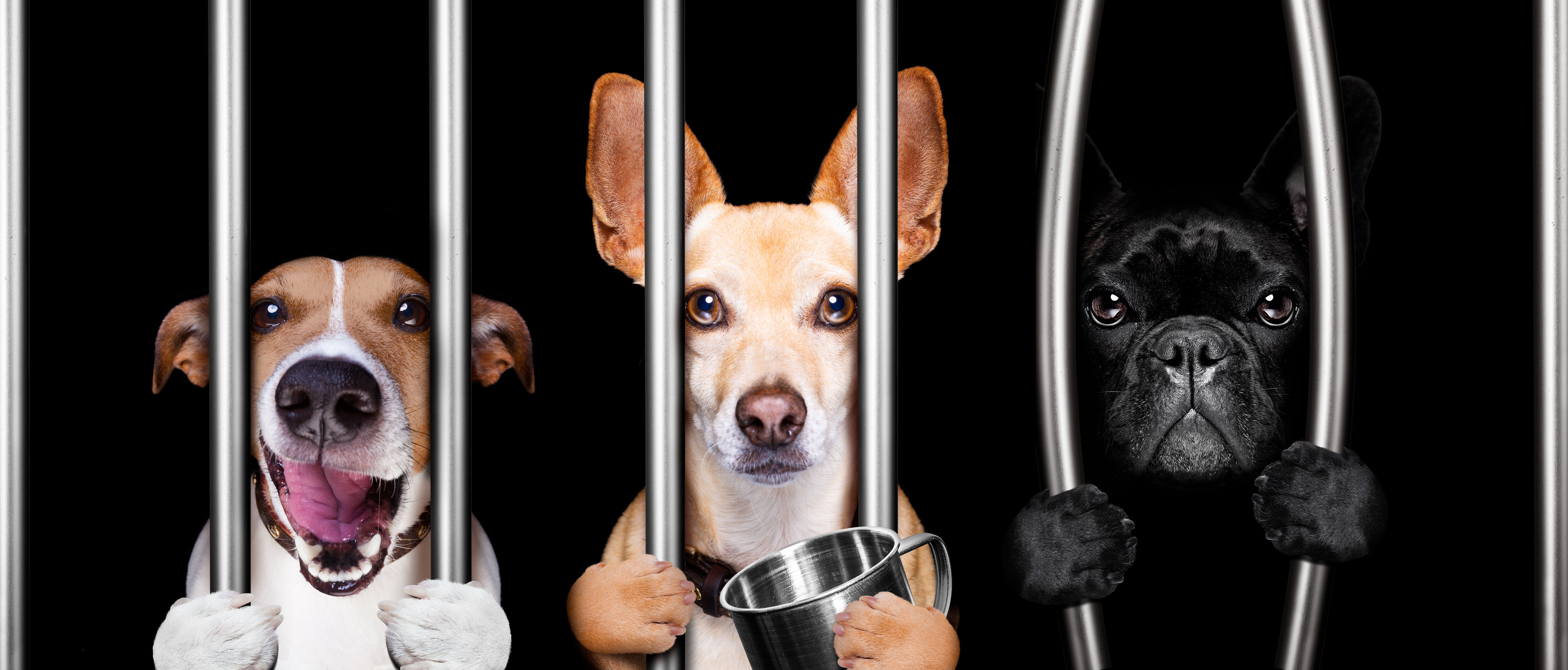Canine News You Can Use
Do you punish your dog? If so, how? If not, why not?

If your dog has absolutely no behavior problems, read no further. This article will be of little interest to you. But if your dog jumps on people, barks, growls, bolts out of an open door, steals food off of a counter, paws at you, etc., etc., read on. There may be some valuable information for you here.
First, we have to define our terms. Why? Because (1) different people can see the same word, but will have different thoughts on what it means, and (2) the meaning of a word can change or have new meanings added to it over time. An example for #1 is “heaven.” Some people will think of where good people go after they die. Other people think it’s a fantasy in someone’s mind about a wonderful place in another dimension. Those two perspectives have been around a long time. An example for #2 is “rainbow.” For some people, the multicolored arc in the sky after a rain comes to mind. For others, it’s a symbol of gay rights. The first perspective has been around a long time, but the second, not so.
So, when we talk about punishment in dog training, we are referring to “something that will decrease a behavior with the goal of eliminating it.” Punishment can be adding something unpleasant or taking away something pleasant, both to decrease a behavior. We will be discussing the former.
Punishment is not abuse. Punishment is not abuse. Yes, I wrote it twice, for emphasis. In today’s world, sometimes the word punishment is equated to “abuse.” The two words do not have equivalent meanings. A dog intentionally tethered to a tree all day with no access to food or water is abuse. A dog that is successfully punished for chasing cars or aggressive behavior will likely have its life saved. From chasing cars, it won’t end up as road kill. From aggressive behavior, it won’t get passed from shelter to shelter, home to home, to eventually be euthanized. Saving a dog's life is not abuse. In another article, I wrote that loving your dog meant seeking its highest good. I submit to you that punishing your dog, when necessary, IS loving your dog. Have you have seen the YouTube video of the little dog that pestered a crocodile for years, then was finally eaten by same that crocodile in a millisecond? It is heartbreaking to watch. Did they love their dog? I don’t think so. They were seeking their own entertainment, not their dog’s highest good.
When we are addressing a bad behavior, there is a correct way to effectively use punishment. The rules of punishment (See Gary Wilkes Blog Post Aversive Control: A biological and evolutionary perspective. Part 3) are (1) the behavior is immediately identified, (2) there is an intolerable consequence, (3) the consequence is inescapable, and (4) the consequence is inevitable. Also, the punishment is not done in anger and it is appropriate for the specific dog. Think of it like a judge delivering a sentence. In most cases, the judge is calm and delivers a sentence that is appropriate for the crime. So it is with punishment when training dogs.
So, let’s take a look at each one of these rules and what they mean for everyday life.
The Behavior is Immediately Identified
The behavior is identified by you, for your dog. The most widely used identifier for bad behavior is the word, “No.” We use the word “No” to mean “Do not do that, ever.” The sequence of the identification and delivery of the consequence is key: “No,” followed by the consequence. Deliver a consequence followed by “No,” and your dog will not understand your message. Getting this right is not quite as easy as it sounds.
The Consequence is Intolerable
All this means is that the consequence is more meaningful and motivational to the dog than the behavior. The level or degree of punishment also depends on the “personality” of the specific dog. Some dogs will melt with a stern look, while other dogs have a “Is that all you got” attitude with almost any consequence. For instance, having guests “turn their back” when faced with a jumping dog, is a certainly a consequence. But it is not meaningful or motivational enough to stop the behavior.
The Consequence is Inescapable
This means that your dog cannot get away from the consequence. If he is able to escape the consequence, there will be no change in behavior (other than learning exactly what to do to escape the punishment).
The Consequence is Inevitable
The consequence is delivered every time the behavior is identified. If your dog is jumping on guests, simply saying (or yelling) “No” or “No jump” does not have an inevitable consequence. There can be a delay between the “No” and the consequence, but there must always be a consequence.
Some tools that can be useful for eliminating bad behavior are collars (e-collar, prong collar, Command Collar®), specialty tools (Pet Convincer®, Doggy Don’t®, a can with pennies in it), and the bonker (a rolled up towel – see Gary Wilkes Why The Bonker Works)
Sometimes you will hear that these types of tools cause fear, or cause a dog to become more aggressive, or cause a dog to "shut down." From my experience training dogs and using all of these tools at one time or another, that has NEVER been true. This big boy named Baden, aka "T-Rex" by his owners was a very stubborn and out of control dog. To help eliminate his behavioral problems, various tools mentioned above were used. Look at the picture and watch the short video below. Baden is not fearful, aggressive, nervous, or anything else predicted by "anti-prong collar, ecollar, etc." folks. To the contrary, he is actually quite relaxed and comfortable.

But punishment is only half of the equation. The opposite of punishment is “reinforcement,” which is “something added or taken away that will increase a behavior with the goal of continuing it.” Using positive reinforcement at the right time will increase the behaviors you desire. Utilizing a combination of punishment and positive reinforcement is the best formula for success, for both you and your dog.
Do you have comments or questions? Let us know on Facebook: Do you punish your dog? If so, how? If not, why not?
Automatically get notified of our blog updates and other stuff by signing up here: Subscribe Now (as a special bonus, you will also receive access to the “Wait Command Video” and a downloadable poster)
Breaking Through Barriers, Transforming Lives...
Jeff
